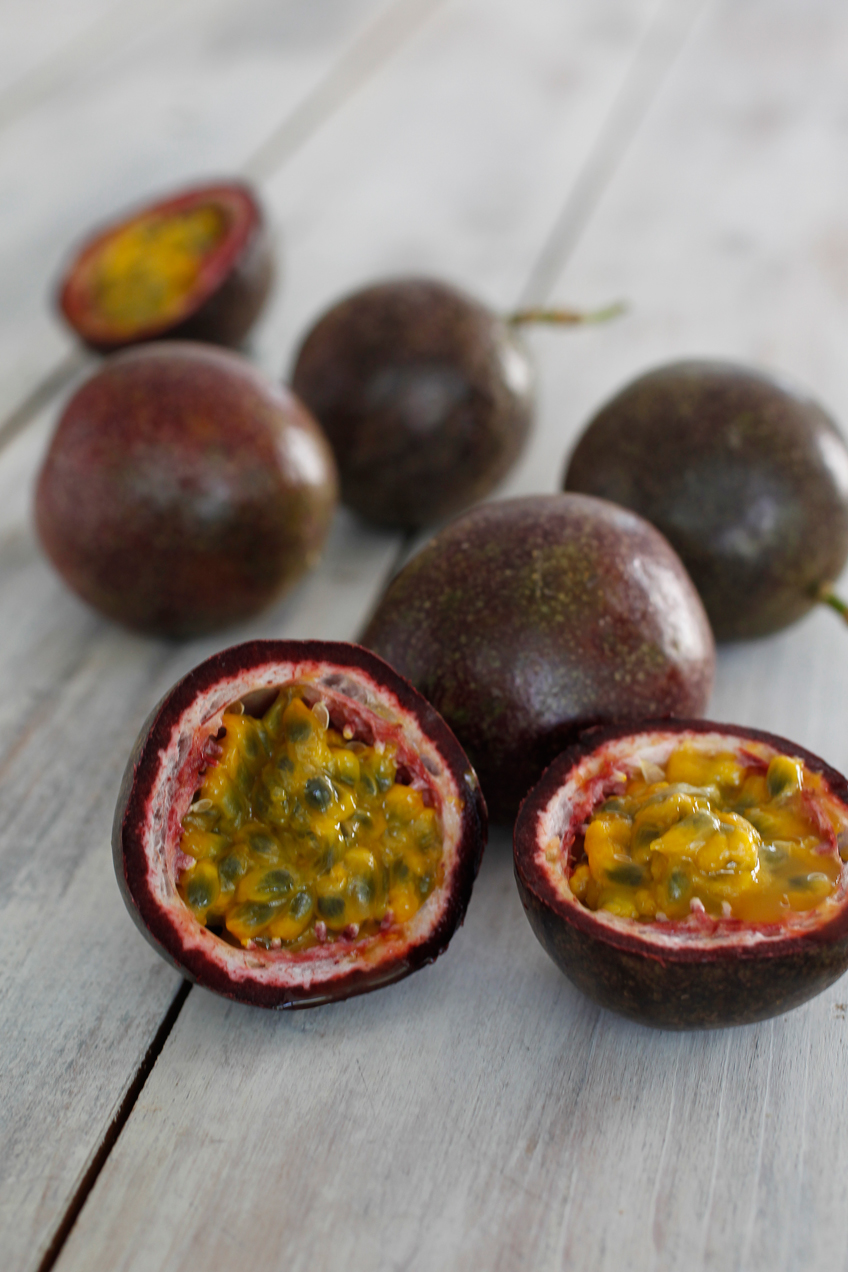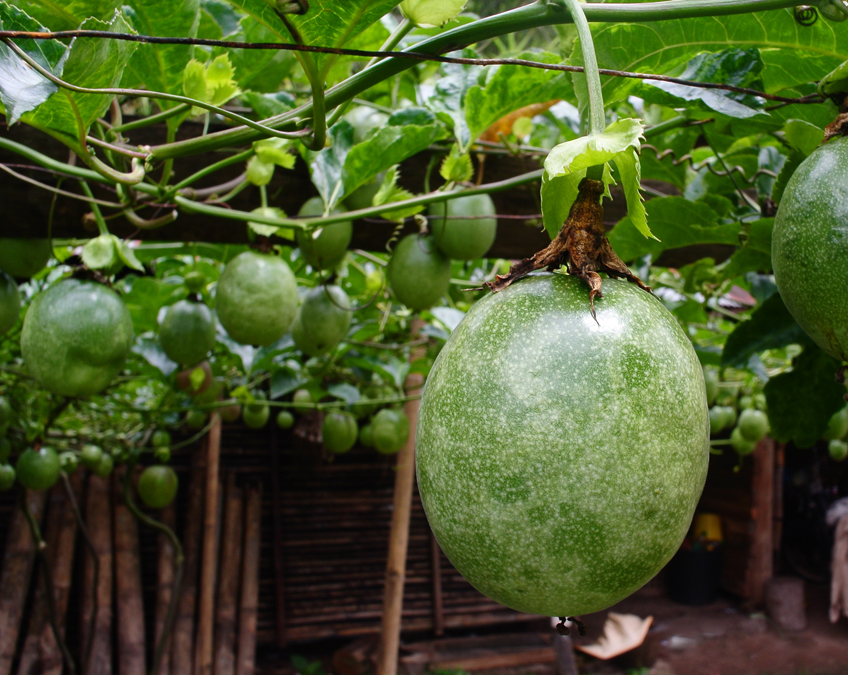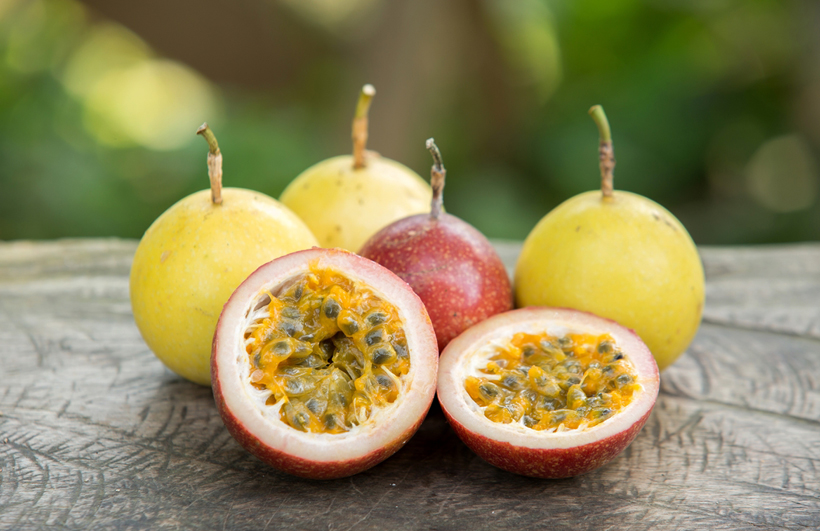Passionfruit are among the most productive of backyard crops, especially when the bees do their thing.
Here Linda Ross gives you 5 things you need to get right before you can produce perfect passionfruit.

Passionfruit are among the most productive of backyard crops.
1. Get rid of the suckers!
The bane of growers is suckering. The understock (P. caerulea) has thinner, five-lobed leaves, a blue flower and no fruit! Remove suckers and
if a vine dies remove the entire rootstock to prevent suckers appearing for years. Reduce suckering by not digging near the vine.
2. Choose grafted plants
Look for plants grafted onto the non-suckering rootstock, P. edulis flavicarpa, which is also disease-resistant. Alternatively, grow from seed
or cuttings.

Passionfruit grows by tendrils so ensure a support for it to twine onto. Photo - SOMMAI / shutterstock
3. Try self-pollination
Fruit failing to form after flowering is due to poor pollination. Try pollinating with a paintbrush and encourage bees by planting rosemary, lavender or
borage in the vicinity.
4. Ripen off the vine
Fruit failing to ripen can be due to low winter temperatures. Fruit may ripen on a sunny windowsill.
5. Treat fungal disease early
Fusarium wilt is the main disease of passionfruit. The first symptom is wilting leaves and spotting on leaves and fruits, which then begin to fall. Use
Eco-fungicide and spray with Yates Antirot.
For more info on growing passionfruit, and to see Linda's top 3 varieties read the full article, Passionfruit.
